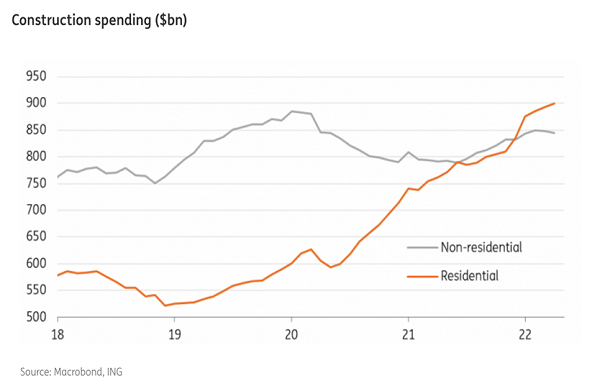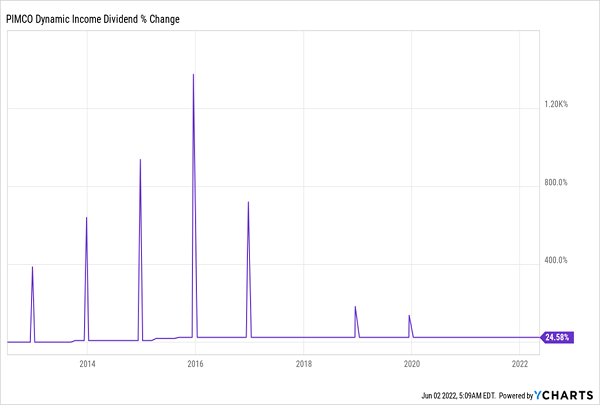There’s a glaring disconnect out there between the health of the economy (still strong) and the mood of investors (terrible). It’s opened a window for us to grab some solid closed-end funds (CEFs) throwing off yields of 8%+.
This is especially true if you’re investing for the long term, which, if you are investing for income like this, you should be.
We’re going to talk about three such high-income plays today (one of which offers an 11.5% payout that’s growing) and dive just a little deeper into why this opening exists for us.
Fast Growth + Worried Investors = Best Time to Buy CEFs
If you’re a bit nervous about investing right now, I get it. Almost every day on the news we’re told to panic about the economy—and that panic has caused stocks to hit a bear market that they’re struggling to come out of.
Thing is, stocks tend to overshoot to the negative in any market correction—and every single time they’ve done this in history, they’ve rebounded. The classic example is the COVID-19 selloff: stocks have soared since, even with the dumpster-fire market we’ve been living through this year.
The COVID-19 Recovery

This isn’t the only reason to consider investing now. A lot of data points show that, fundamentally, the US economy is still sound. A recent report by ING noted that a lot of data points “suggest the economy will rebound strongly in the second [quarter of 2022] with 4%+ GDP growth on the cards.” ING also noted that the employment market is red hot:

And construction spending is on the rise, which is driven by corporate investment:

The bottom line is that the market is pricing in a recession when the data is telling us that hard times we’re still a long way away from one. That’s historically the best time to buy. A good place to start is with those three CEFs I mentioned off the top, which together give us some nice exposure to bonds, small-cap and large-cap stocks. They also yield a rich 9.1%, on average, between them:
Start With This 11.5%-Paying Bond Buy …
Now, you might have been told that high yields, like the 11.5% paid by the PIMCO Dynamic Income Fund (PDI) are unsustainable. But PDI uses a mix of sound bond purchases and active management—backed by PIMCO, one of the most experienced houses in the CEF business—to generate that payout, which hands back $958 in dividends for each $100,000 investors put in.
In fact, PDI not only has maintained this payout for over a decade, it’s actually increased payouts and paid a slew of special dividends, too.
No Dividend Cuts Here!

PDI does this with a shrewd strategy of buying corporate bonds that are oversold in market panics—so big US and international outfits, like Athenahealth, American Airlines’ AAdvantage Loyalty business, European oil giant Sasol Ltd. and entertainment conglomerate MGM pay out a steady income stream to PDI that the fund, in turn, hands over to investors.
… And Add These 2 Stock-Focused CEFs Yielding Up to 9.4%
In addition to PDI, I’d suggest taking a look at two CEFs focused on stocks to get in on this oversold environment: the Liberty All-Star Growth Fund (ASG) and General American Investors Company (GAM).
ASG typically leans toward smaller, growth-oriented tech companies like Casella Waste Systems (CWST) and human-resource-software maker Workday (WDAY), but more recently has been pivoting to bigger and more reliable firms like Amazon (AMZN), Visa (V) and Microsoft (MSFT). That’s because all of these companies are oversold based on their healthy sales—which also means these bargains can’t last; as these stocks return to their “normal” values, they’ll drive gains for the fund, while supporting its 9.4% dividend yield.
Also, with ASG’s long history of profits (the fund’s total return is still well ahead of where it was pre-pandemic level, despite the big hit tech has taken recently), it has out-earned its payouts. So there’s good reason to expect investors to buy this latest dip, which could drive ASG’s premium to NAV, and its price, higher.
While GAM’s portfolio is somewhat similar—Microsoft and Amazon are top holdings—it stays much more conservative, also holding big cash-flow generators, such as Apple (AAPL), Republic Services (RSG) and TJX Companies (TJX). That’s helped the fund pay out an annualized dividend of about 6.5% over the long term, yet even so, the market has punished GAM with a 15.3% discount to NAV that compounds the oversold prices of the stocks it holds.
Put GAM, ASG and PDI together and you’ve got a basket of hundreds of stocks and bonds and an average yield of 9.1%, plus a long history of dividend stability, too.
— Michael Foster
4 More “Better Than Gold” CEFs That Crush Inflation, Yield 8.5% [sponsor]
I’ve hand-picked 4 other CEFs I see as absolutely critical buys for today’s pressured markets and rising inflation. This quartet yields a healthy 8.5% now, they all pay dividends monthly and they trade at even more attractive discounts than the three funds we just discussed.
The takeaway? I expect these 4 funds to hold up nicely, even if the summer is rough for the markets. And when stocks do (inevitably!) find their footing, these funds’ deep discounts set them up to surge for some very nice gains indeed!
And we’ll collect their rich 8.5% average dividend—paid monthly, no less—the entire time.
I think everyone should hold at least a couple of these funds now, but most folks are still hung up on gold and other outdated “sacred cows” that pay no dividends (and don’t even get me started on crypto!). Not us, though. With these 4 high-yield CEFs, we’ll be coasting through on our high, stable dividends.
Click here and I’ll introduce you to my full CEF-investing strategy and show you how to access to my research on these 4 high-dividend funds, including their names, tickers, current yields (average payout: 8.5%) and more!
Source: Contrarian Outlook


